In the ’60s and ’70s, racing wasn’t just a weekend show — it drove the cars in your driveway.
If NASCAR or NHRA said “build 500 street versions,” Detroit did it, shoving race motors into showroom bodies.
The result? Some of the wildest, rarest, and most unforgettable street cars America ever produced. ⬇️
1. Dodge Charger Daytona (1969)
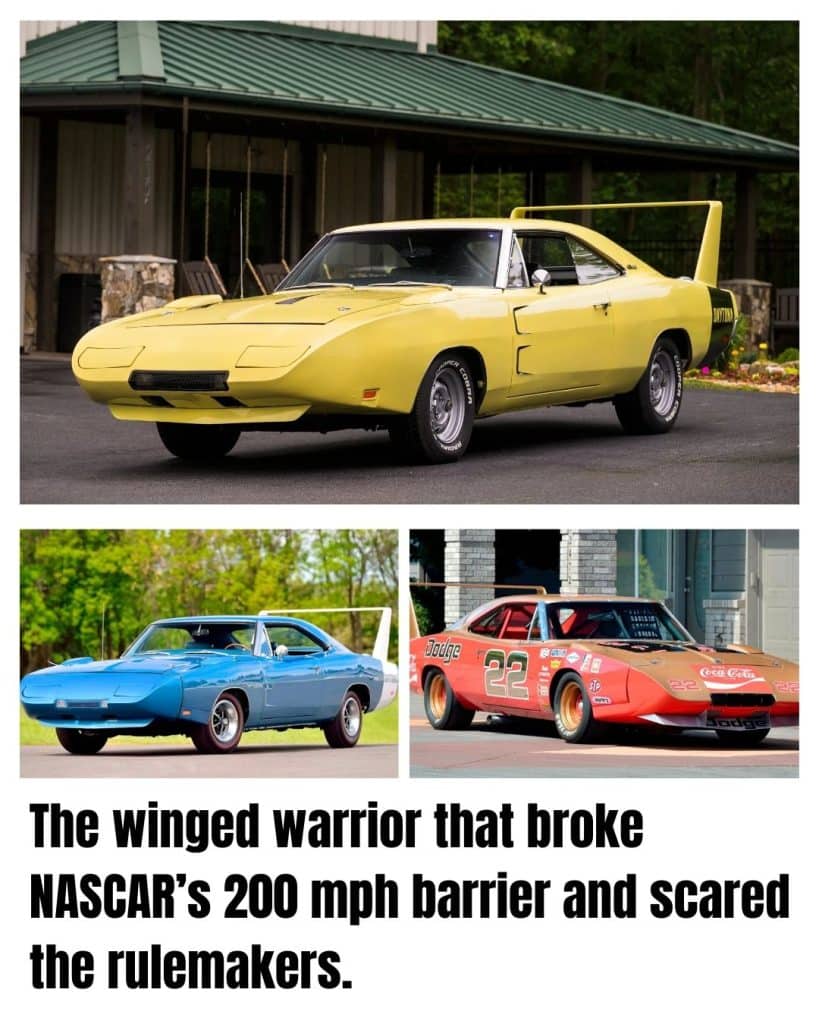
Chrysler built the Dodge Charger Daytona with one goal: win NASCAR. With a massive rear wing, pointed nose cone, and special aerodynamics, it was unlike anything else on the street.
To homologate it, Dodge had to sell 500 road-going versions, which meant customers could actually buy a factory car capable of 200 mph.
The Daytona’s radical design made it a legend in the “Aero Wars,” and its influence was so strong NASCAR had to change the rules to keep speeds under control.
2. Ford Galaxie 500 Lightweight (1963)
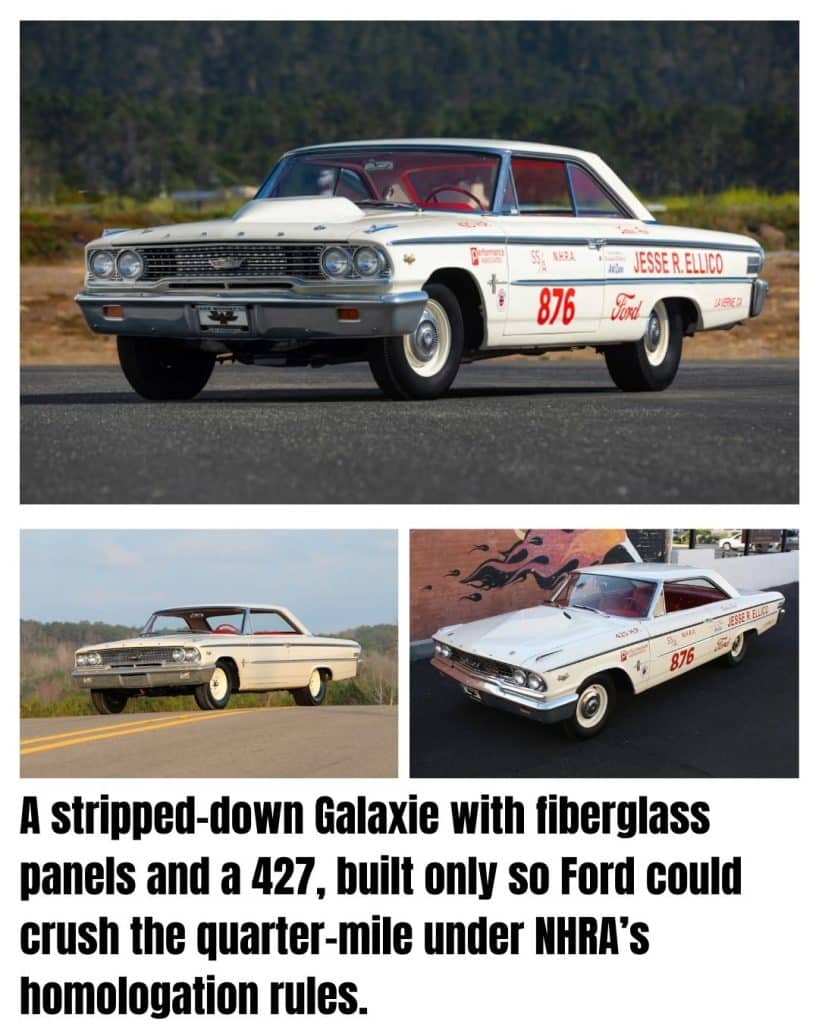
In the early ’60s, Ford was hungry for dragstrip dominance, so they built just 200 Galaxie Lightweights.
These cars had aluminum body panels, fiberglass parts, and Ford’s thunderous 427 V8 under the hood.
Stripped of creature comforts and built only to satisfy NHRA rules, they were brutally fast but miserable daily drivers.
On the quarter-mile, though, they were nearly unbeatable.
It was a pure homologation car; a race-ready Galaxie wearing street plates just to keep the sanctioning body happy.
3. Ford Torino Talladega (1969)
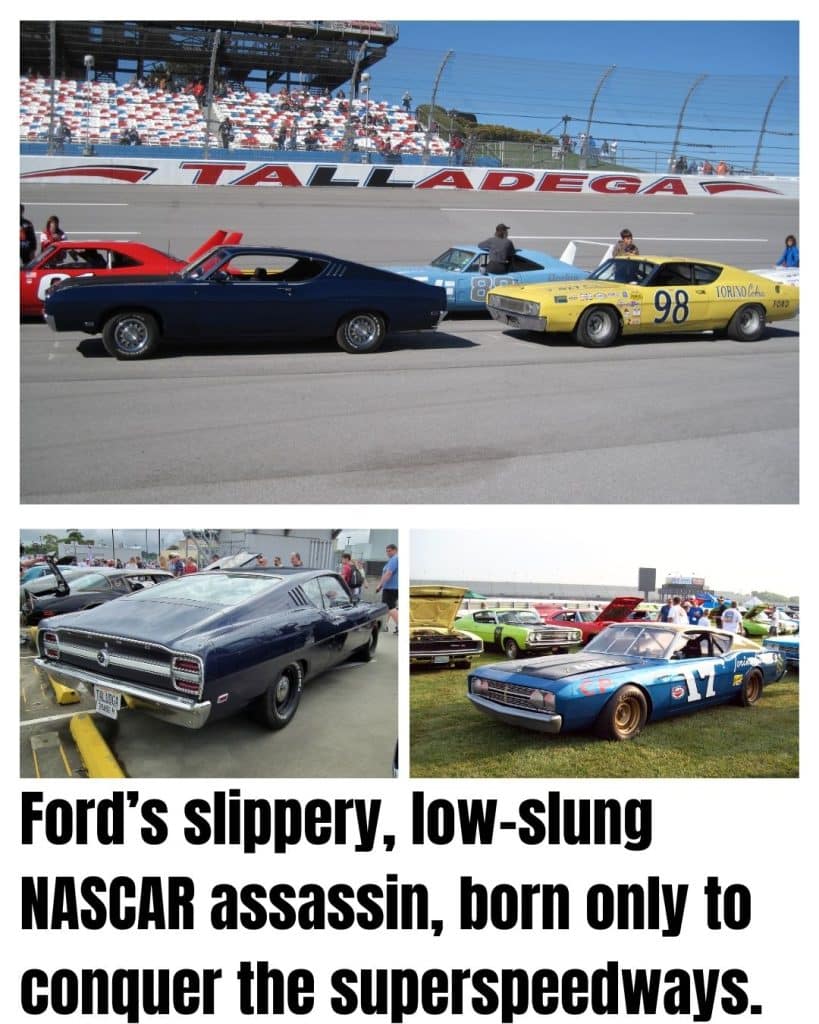
Named after NASCAR’s fastest track, the Torino Talladega was Ford’s ticket into the aero wars.
The production car came with a reshaped nose, flush-mounted grille, and other tweaks to cut drag at 200 mph.
Ford had to sell 500 to the public to qualify, making this a true street-legal racecar.
Though not flashy like a Mustang, the Talladega was built for one thing only: speed on the superspeedways.
Its influence secured Ford a NASCAR championship, proving homologation worked exactly as intended.
4. Mercury Cyclone Spoiler II (1969)
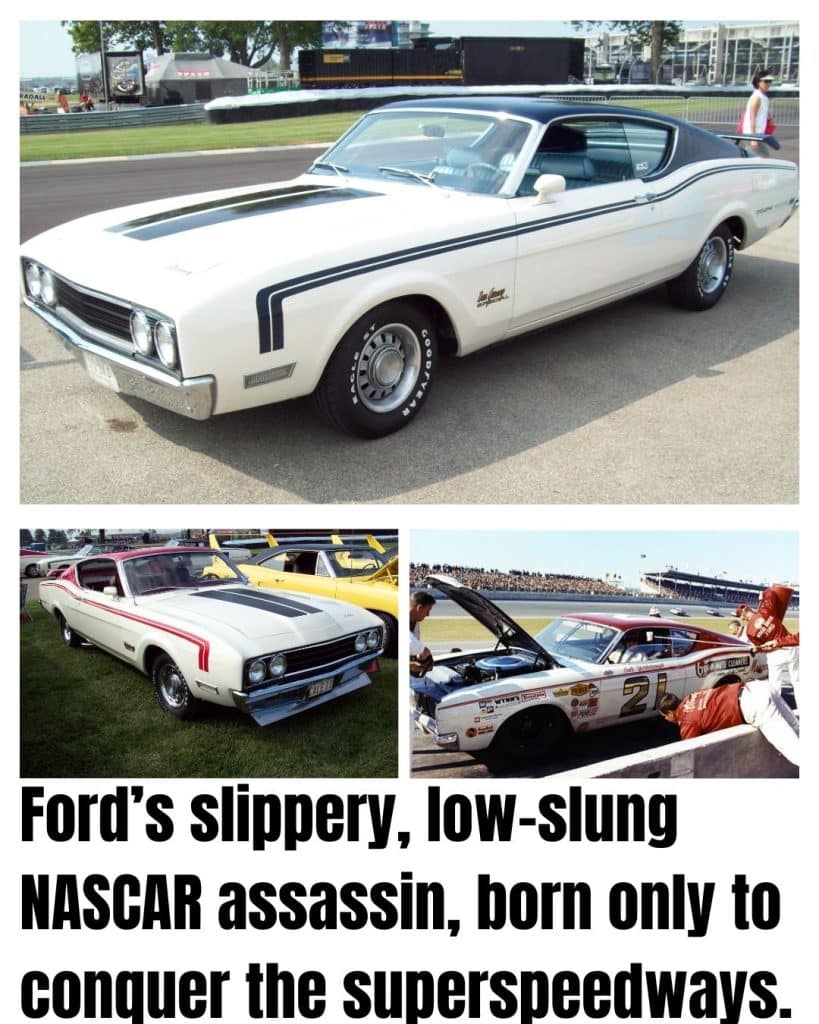
Mercury wasn’t about to be left behind, so they built the Cyclone Spoiler II as their NASCAR entry.
Like the Torino Talladega, it had an extended nose, smoother aerodynamics, and came with big-block power under the hood.
Barely 500 were made for homologation, making it a rare sight today.
While Mercury didn’t have the same success on track as Dodge or Ford, the Spoiler II remains a fascinating relic of the NASCAR aero wars — a street car that existed only to keep the rulebook satisfied.
5. Plymouth Superbird (1970)
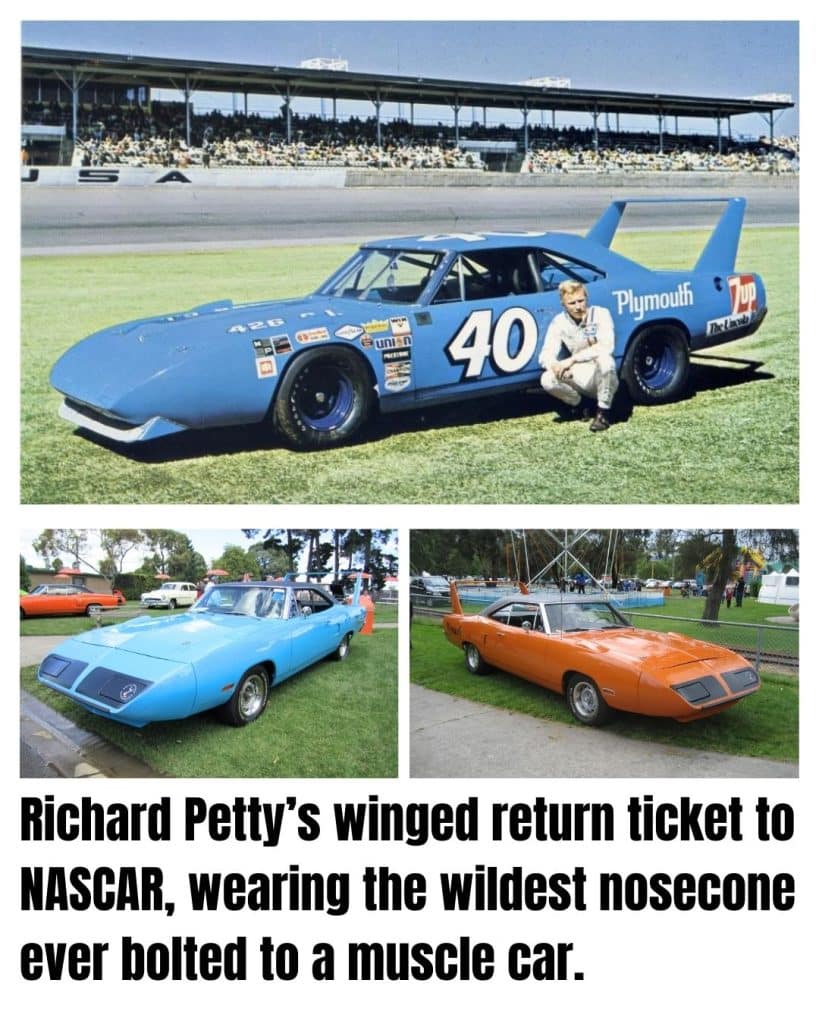
The Superbird was Plymouth’s answer to Dodge’s Daytona. Designed to lure Richard Petty back to the team, it came with a massive wing, pointy nose, and high-revving 426 Hemi option.
NASCAR rules meant Plymouth had to build nearly 2,000 of them for the street, making it one of the most outrageous production cars ever offered to the public.
Though buyers were reluctant at first, collectors now pay six-figure prices for what is arguably the wildest muscle car ever built for the oval track.
6. AMC Rebel Machine (1970)
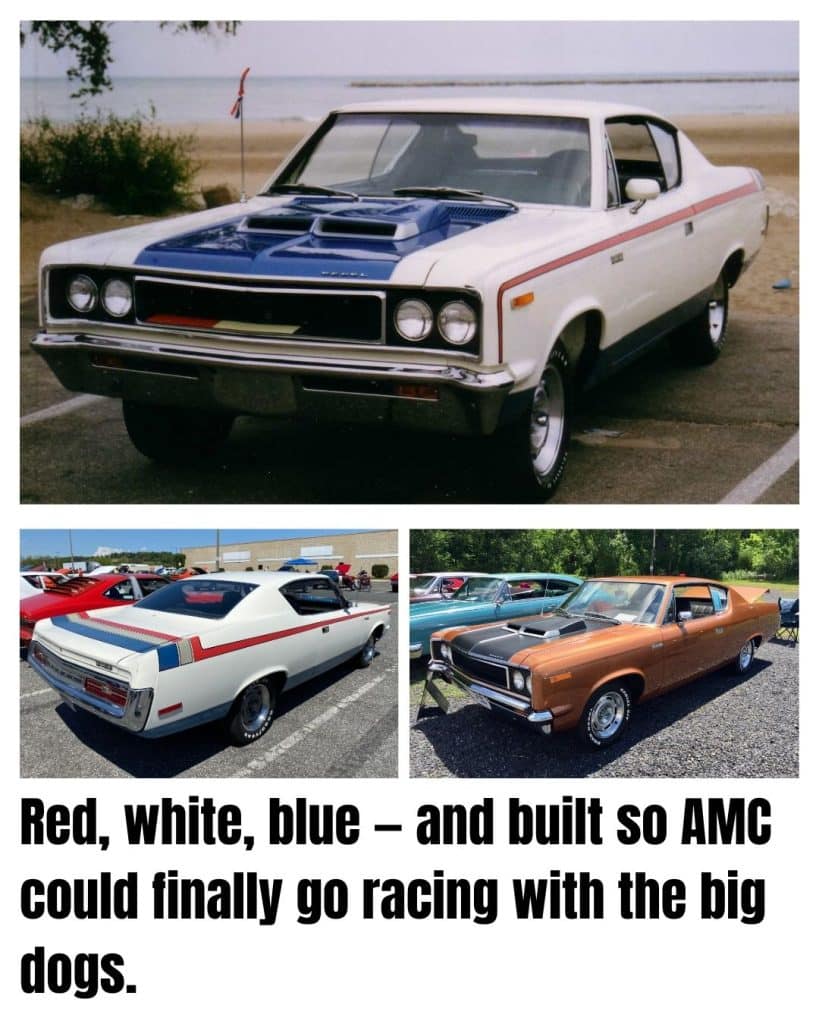
AMC wasn’t as big as the Detroit Three, but they weren’t about to miss out on NASCAR glory.
The Rebel Machine was their homologation ticket, packing a 390 cubic-inch V8 and wearing wild red, white, and blue paint.
Just over 2,300 were built, mainly to get AMC’s name on the track. While it never dominated like Ford or Dodge, the Machine is remembered as AMC’s boldest muscle car — a no-nonsense street version of a racecar, built to prove they could run with the big boys.
7. Chevrolet Camaro ZL1 (1969)
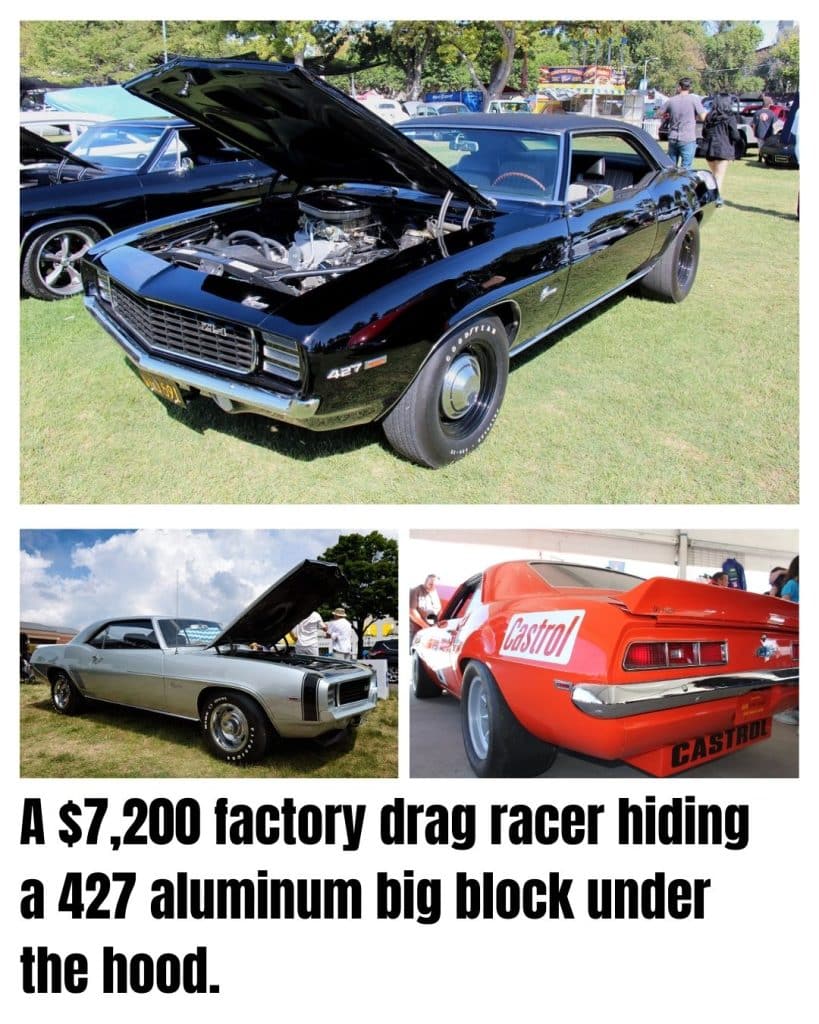
Chevy’s ZL1 Camaro was born for NHRA Super Stock drag racing. Using a special COPO (Central Office Production Order), dealers like Fred Gibb ordered cars fitted with the all-aluminum 427 V8.
Only 69 were made, making it one of the rarest Camaros ever built. The ZL1 was brutally fast but priced far beyond most buyers’ budgets.
On the strip, though, it was nearly unbeatable, proving Chevy’s muscle could outgun anything Ford or Mopar had when it came to quarter-mile supremacy.
8. Plymouth AAR ’Cuda (1970)
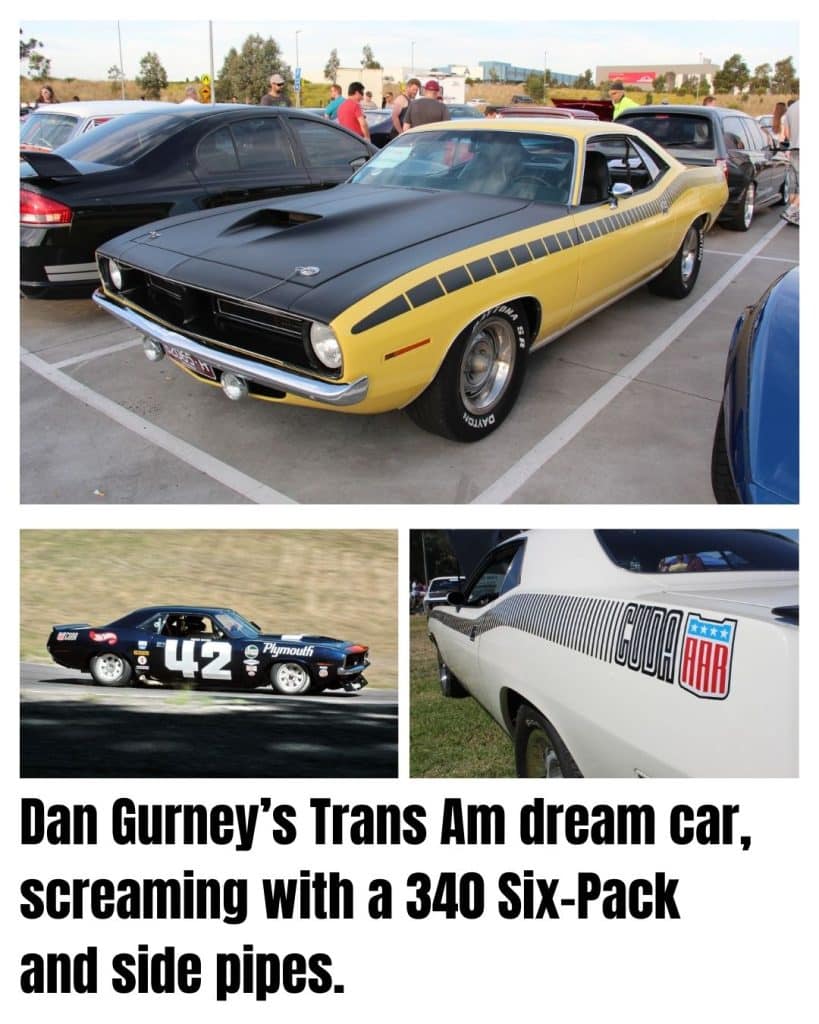
Plymouth’s entry into Trans Am racing was the AAR ’Cuda, named for Dan Gurney’s All American Racers team.
To compete, Plymouth had to sell street versions, which meant a 340 six-pack engine, side-exit exhaust, and a unique fiberglass hood.
Only about 2,700 were built, and while it wasn’t a big success in Trans Am, the AAR became a cult favorite.
It looked wild, sounded mean, and gave buyers a taste of the racing scene — even if its real purpose was keeping Plymouth legal.
9. Dodge Challenger T/A (1970)

The Challenger T/A was Dodge’s counterpart to the AAR ’Cuda, also created for Trans Am.
It featured the same 340 six-pack engine, aggressive stripes, and road-race suspension that made it one of the sharpest-handling muscle cars of the era.
Roughly 2,400 were produced, just enough to homologate Dodge’s entry.
While Chrysler didn’t bring home a championship in Trans Am, the T/A remains one of the coolest “street racecars” ever sold, offering everyday drivers a chance to own a slice of professional racing heritage.
10. Shelby GT350R (1965)

Carroll Shelby knew Ford’s Mustang needed racing credibility, and the GT350R was the car to deliver it.
Built for SCCA B-Production racing, Shelby had to sell just 34 street-capable versions, but they were essentially racecars with plates.
Stripped interiors, fiberglass body panels, and tuned 289 V8s made them lethal on the track.
While the GT350R was uncomfortable on the street, it did exactly what it was meant to: transform the Mustang from a secretary’s car into a motorsport legend.
11. Boss 302 Mustang (1969)
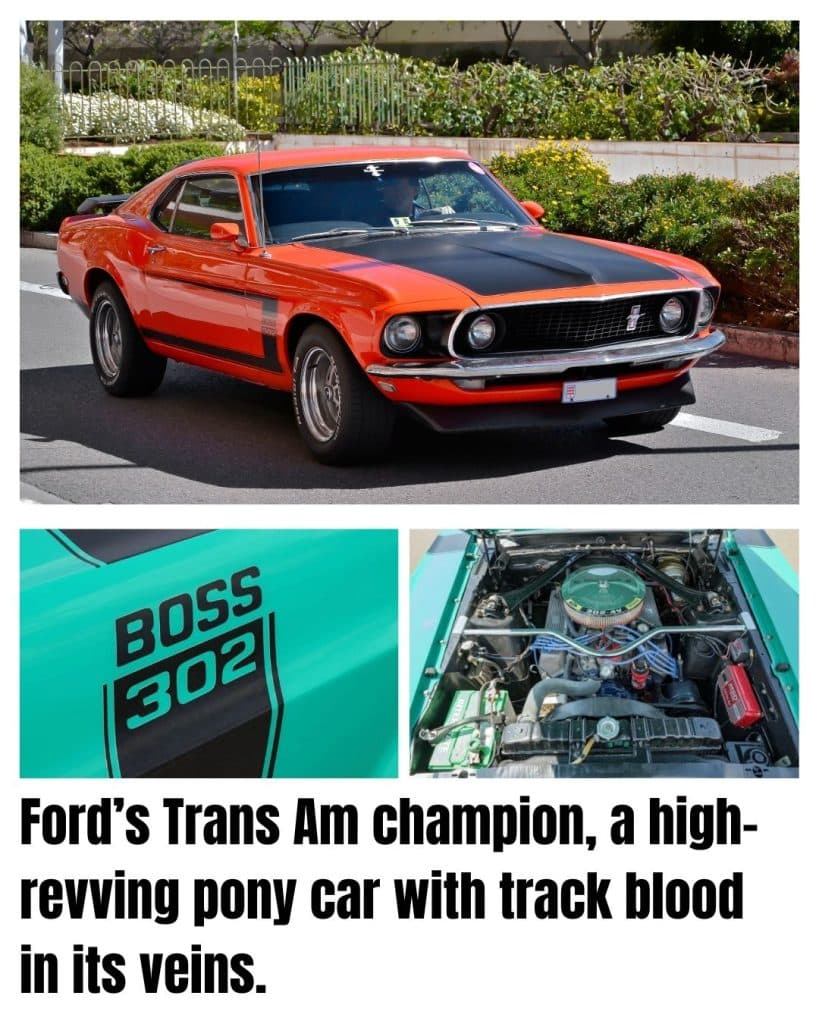
Ford built the Boss 302 Mustang specifically for Trans Am racing. With its high-revving 302 cubic-inch V8, quick-ratio steering, and aggressive suspension, it was nothing like the regular Mustang.
About 7,000 were sold to the public, just enough to make it eligible for the series. On the street, it was raw and edgy, but on the track, it was a champion, giving Ford the 1970 Trans Am title.
The Boss 302 stands as one of the sharpest-handling pony cars of its era.
12. Camaro Z/28 (1967–69)
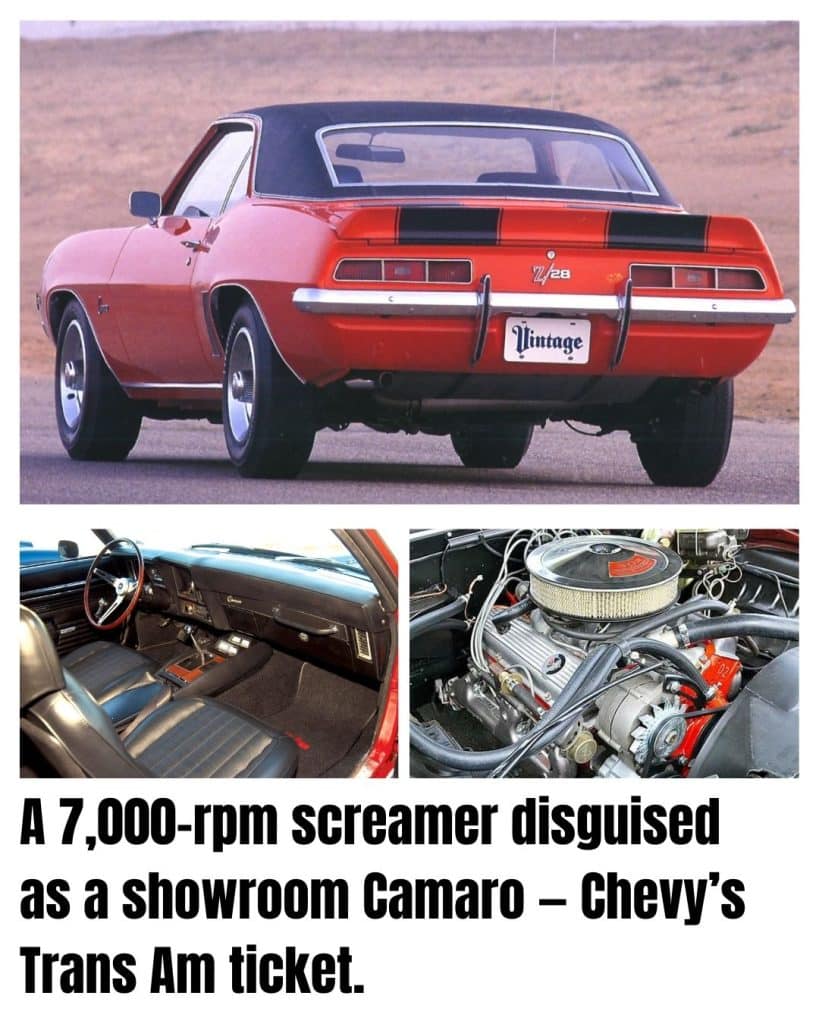
Chevy’s Z/28 was their Trans Am homologation weapon. Unlike most muscle cars, it wasn’t about cubic inches but handling and revs.
Its 302 small-block was built to scream past 7,000 rpm, paired with heavy-duty suspension and brakes.
About 20,000 were made across three years, but they were sold only to hardcore enthusiasts.
On the track, the Z/28 cemented Camaro’s racing reputation, and on the street, it delivered a factory-built racecar experience. It remains one of the most important muscle cars ever built.
13. Plymouth Duster 340 Twister (Prototype Intent)
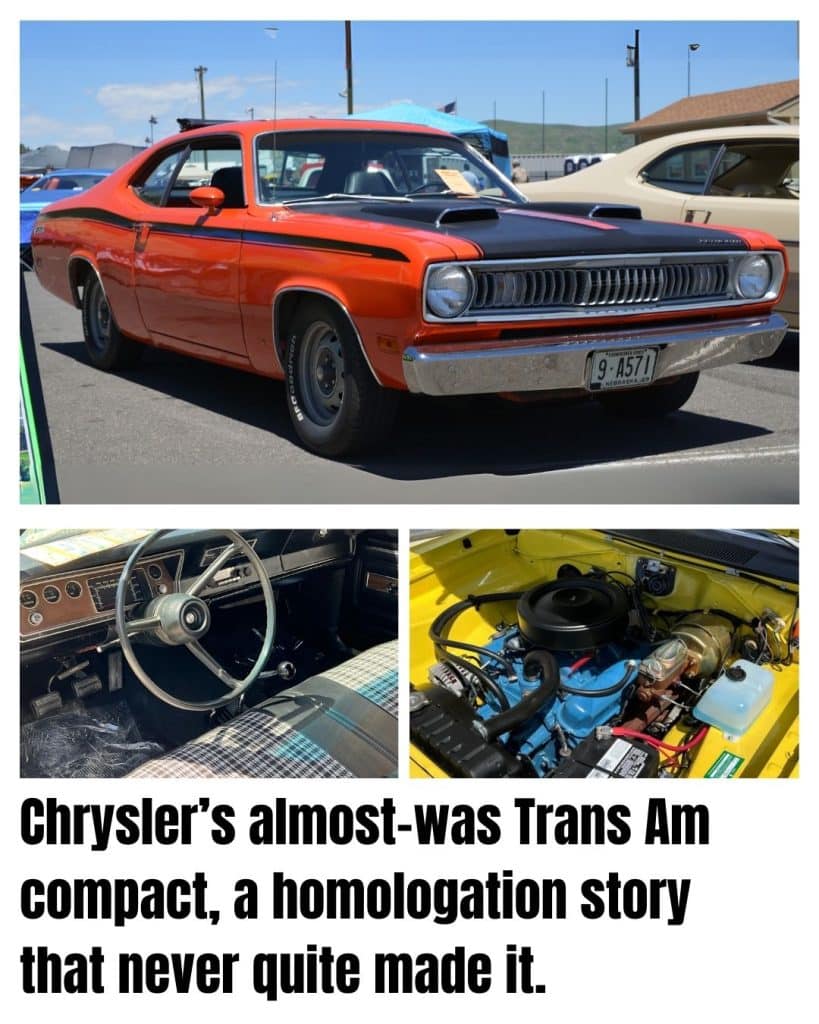
Chrysler briefly toyed with homologating the Duster for competition, creating several prototypes under the “Twister” name.
While it never made it into full-scale production like the AAR ’Cuda, it was built with the same goal in mind — take a lightweight compact, give it serious power, and homologate it for SCCA racing.
Though the project stalled, the prototypes survive as reminders of how deep Detroit was into the homologation game during the late ’60s and early ’70s.
14. Corvette L88 (1967)
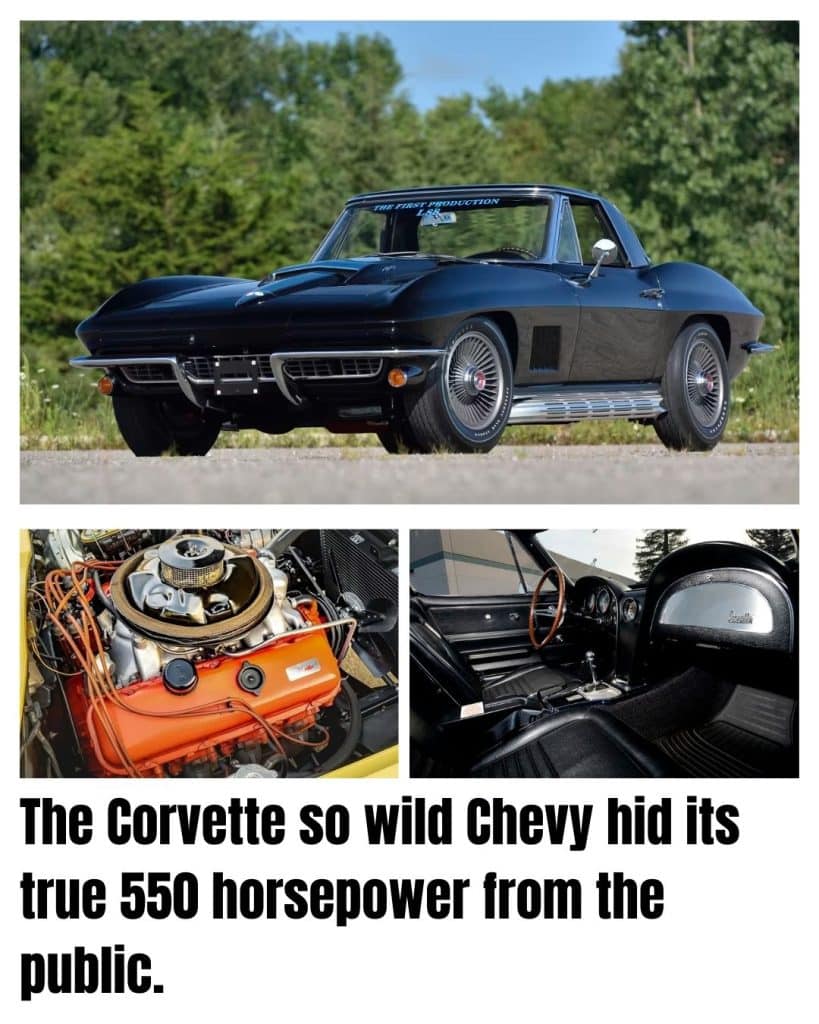
The L88 Corvette was a homologation car disguised as a street machine. Chevrolet officially rated its 427 big-block at 430 horsepower, but in truth, it made closer to 550.
Only 20 were built in 1967, and they came stripped of creature comforts like radios and heaters to discourage casual buyers.
On the track, the L88 was a terror, dominating SCCA and FIA competition. Today, these cars are million-dollar collectibles, prized as the ultimate factory race-prepped Corvettes ever unleashed.
15. Dodge Dart GTS 440 (1969)
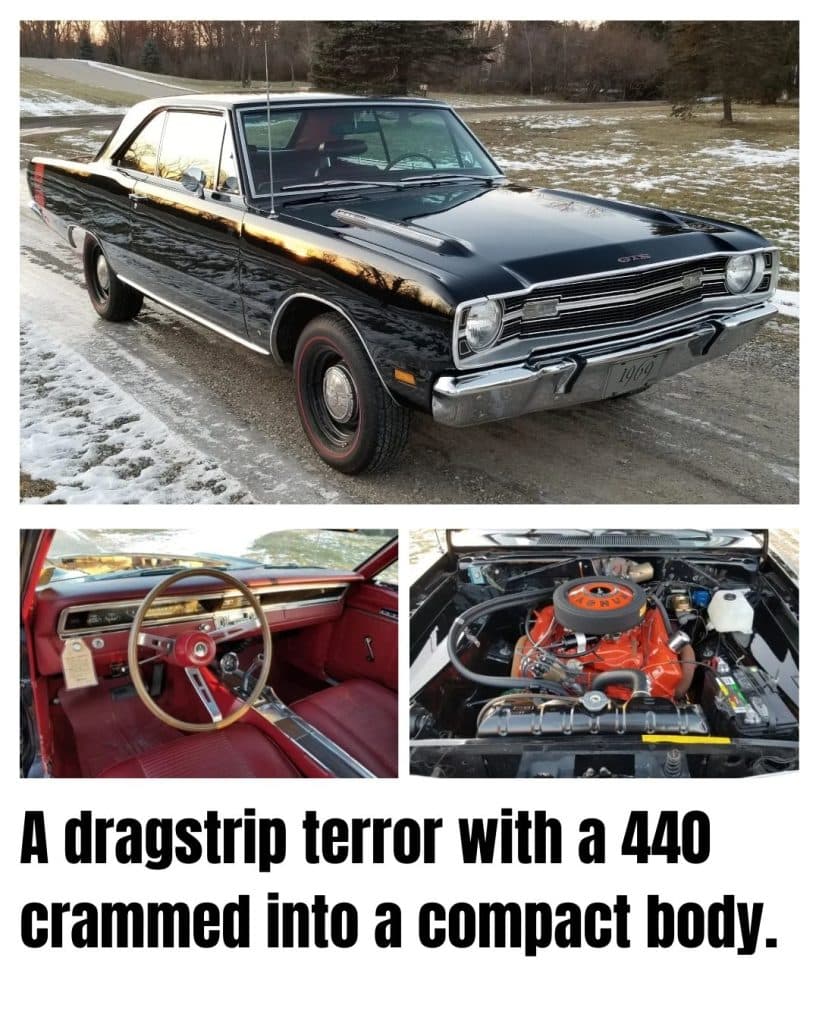
One of Chrysler’s most outrageous homologation tricks was stuffing the 440 big-block into the compact Dart body.
Built in tiny numbers for drag racing homologation, the Dart GTS 440 was nearly undrivable on the street — nose heavy, violent, and built only to go fast in a straight line.
Chrysler produced just enough to satisfy NHRA rules, then let racers do the rest.
Though overshadowed by HEMI cars, the Dart 440 is one of the purest examples of a drag-strip special with license plates.
16. Pontiac GTO Judge Ram Air IV (1969)
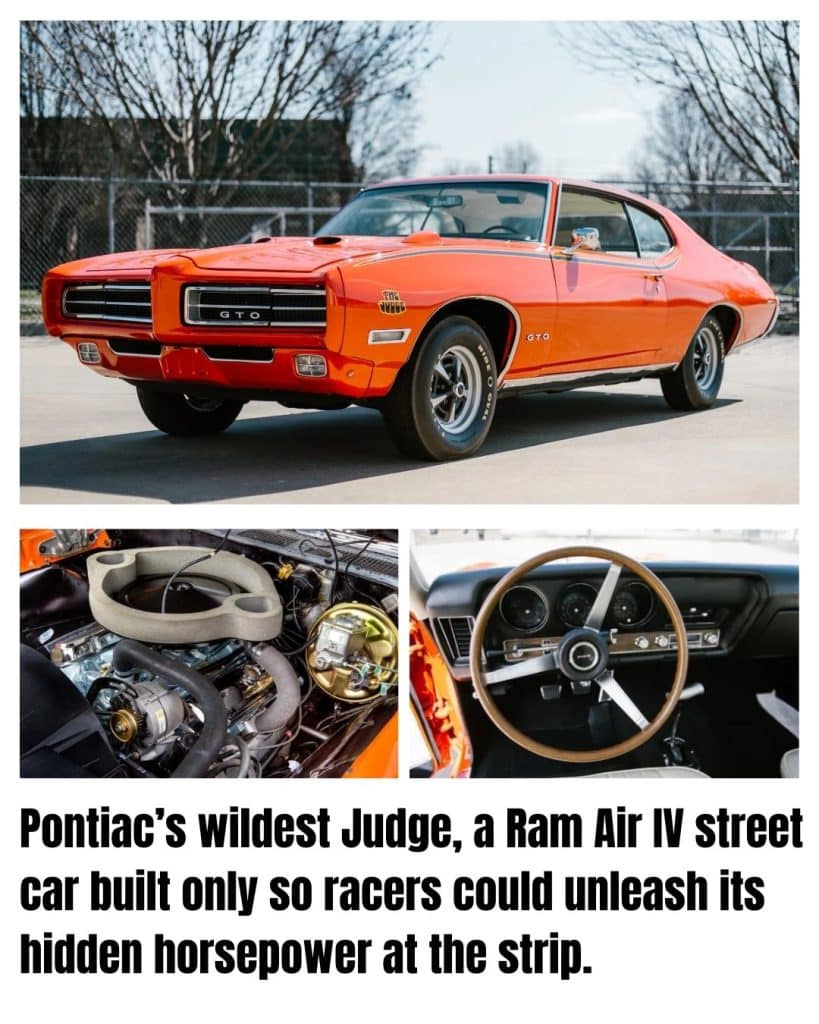
Pontiac’s GTO Judge was already wild, but the Ram Air IV version was built with NHRA racing in mind.
With high-compression heads, a radical camshaft, and free-breathing exhaust, it made way more power than Pontiac admitted.
Only a few hundred were built, and while it could be street-driven, its real purpose was quarter-mile performance.
The Judge Ram Air IV proved Pontiac wasn’t just about marketing flair — it was a genuine homologation muscle car that gave racers the tools they needed.
17. Ford Galaxie 500 R-Code (1963)
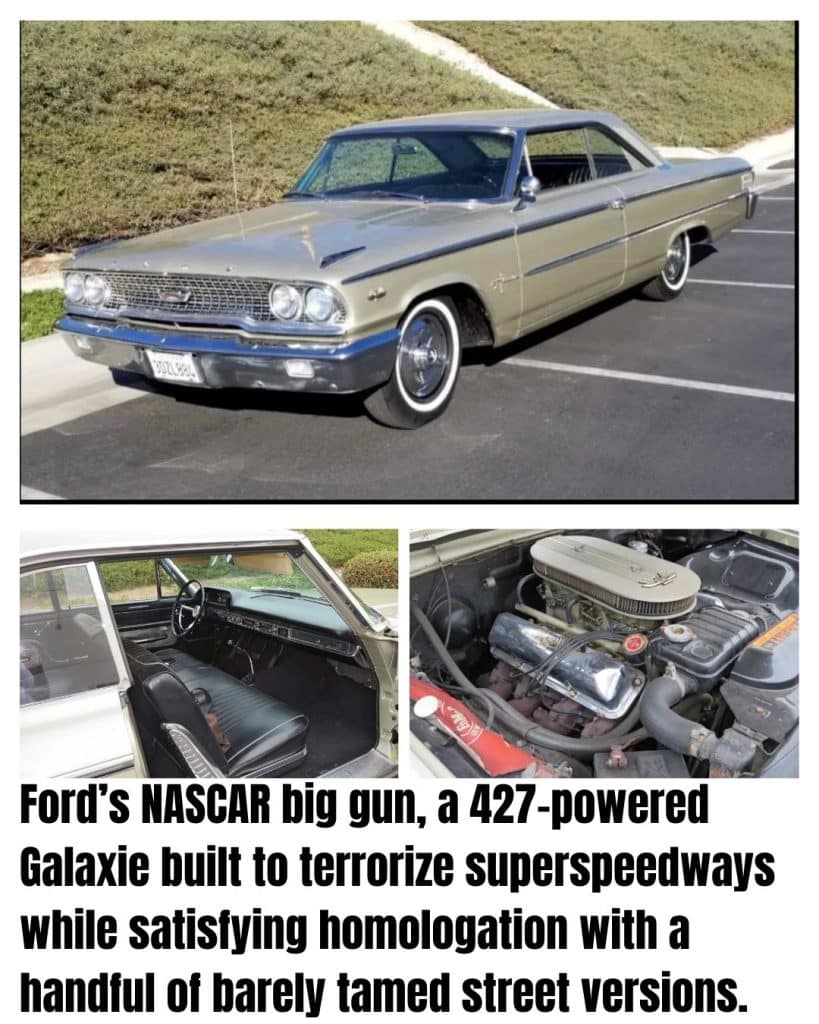
Built to dominate NASCAR before the aero wars began, the Galaxie 500 R-Code packed Ford’s brutal 427 cubic-inch V8.
Homologation rules meant Ford had to build a handful of these street cars, which came with lightweight body panels and minimal frills.
On the superspeedways, the R-Code Galaxies tore up the competition, cementing Ford’s place in stock car history. On the street, they were barely tamed, noisy, and thirsty. This was a racecar in Ford showroom clothing.
18. Chevrolet Chevelle SS 454 LS6 (1970)
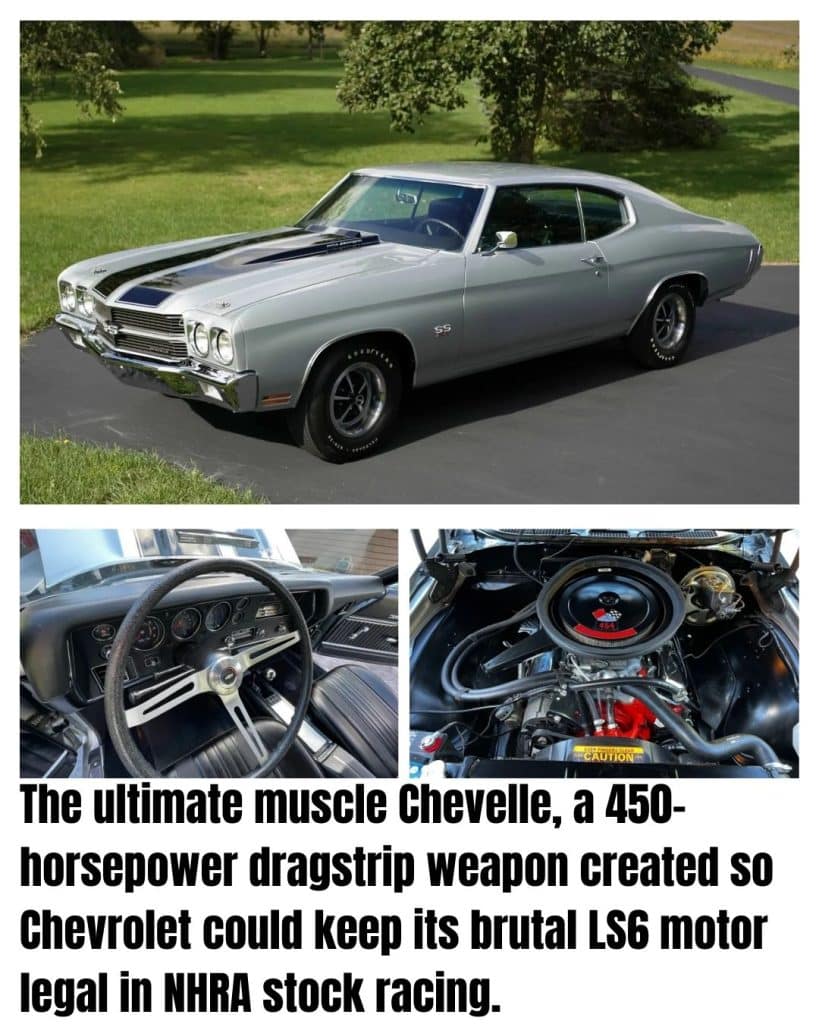
Chevrolet’s Chevelle SS 454 LS6 was more than just a muscle car — it was a factory-built drag racer designed with NHRA rules in mind.
With 450 officially rated horsepower (but likely more in reality), it remains one of the most powerful cars of the muscle era.
Chevy produced just enough to keep the car legal for stock drag classes, but everyday buyers could snag one off the lot.
The LS6 Chevelle blurred the line between street car and pure race machine.
19. Plymouth Road Runner 426 HEMI (1968)
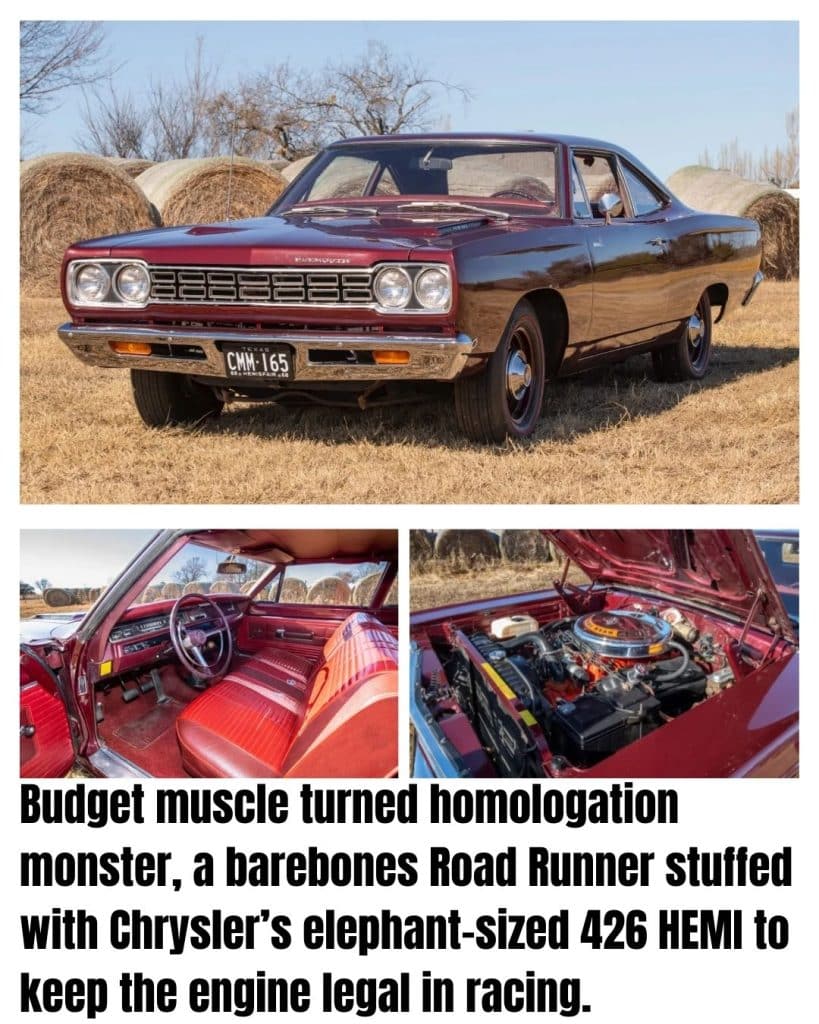
The Road Runner was Plymouth’s budget muscle car, but when fitted with the 426 HEMI, it became a homologation weapon.
Chrysler needed to sell a minimum number to keep the HEMI eligible in NASCAR and NHRA, so they crammed the elephant motor into everything, including the Road Runner. Stripped down and barebones, it was built for one thing: speed.
Buyers lucky enough to order a HEMI Road Runner got a street car with serious track intentions baked in.
20. Dodge Coronet Super Bee Six Pack A12 (1969)
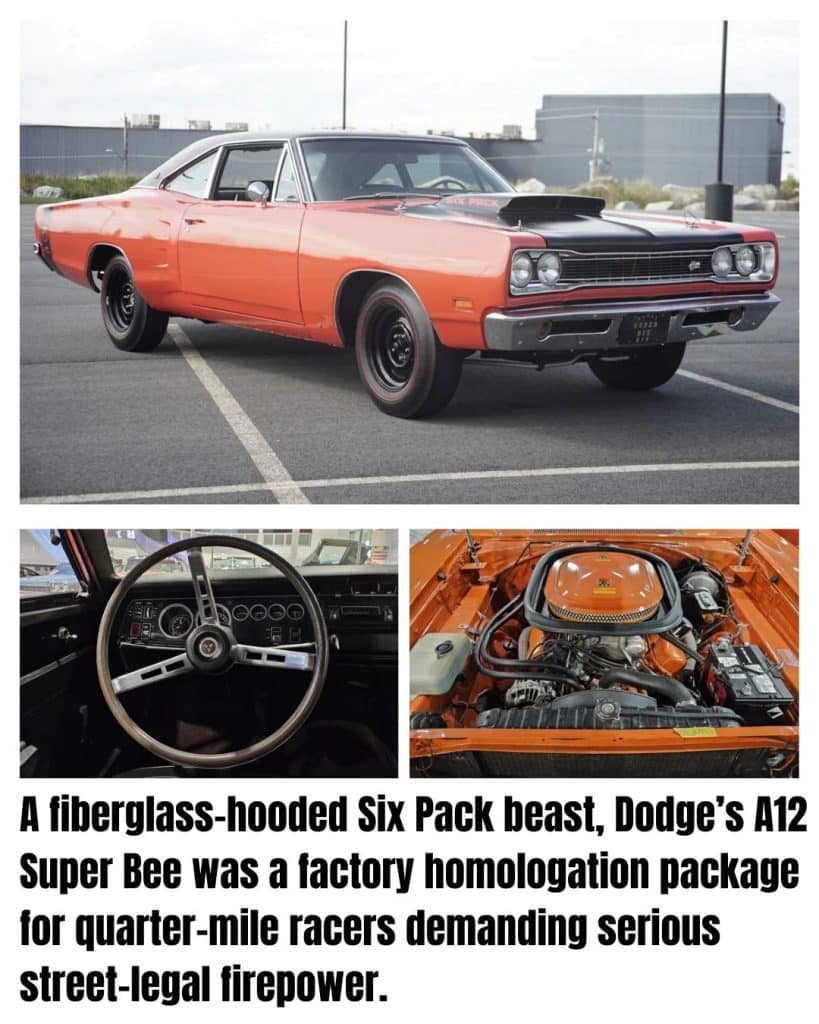
The A12 Super Bee was Dodge’s way of sneaking a race-ready package onto the street. With a 440 Six Pack, fiberglass hood, and heavy-duty suspension, it was built to qualify for drag racing classes.
Only a few thousand were produced, and they remain some of the nastiest Mopars of the muscle era.
The A12’s purpose was clear: satisfy homologation rules while giving drag racers a turnkey weapon straight from the factory.
21. Ford Fairlane Thunderbolt (1964)
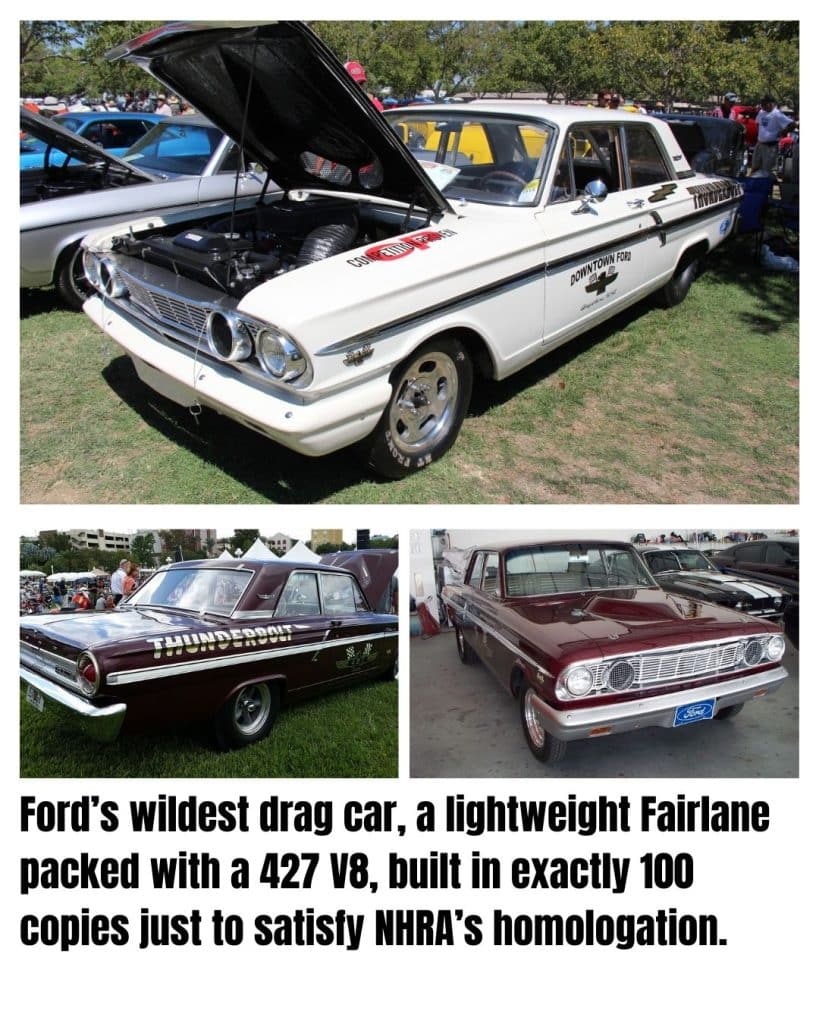
The Thunderbolt was Ford’s most outrageous homologation trick of the 1960s. Built for NHRA Super Stock, it stuffed a 427 V8 into a lightweight Fairlane body.
Only 100 were built, just enough to qualify. They were stripped of comforts like radios and heaters, replaced with fiberglass panels and racing seats.
On the strip, the Thunderbolt was nearly unbeatable. On the street, it was barely usable. Today, it stands as one of the purest American homologation cars ever created.
22. Chevrolet Corvette Z06 (1963)
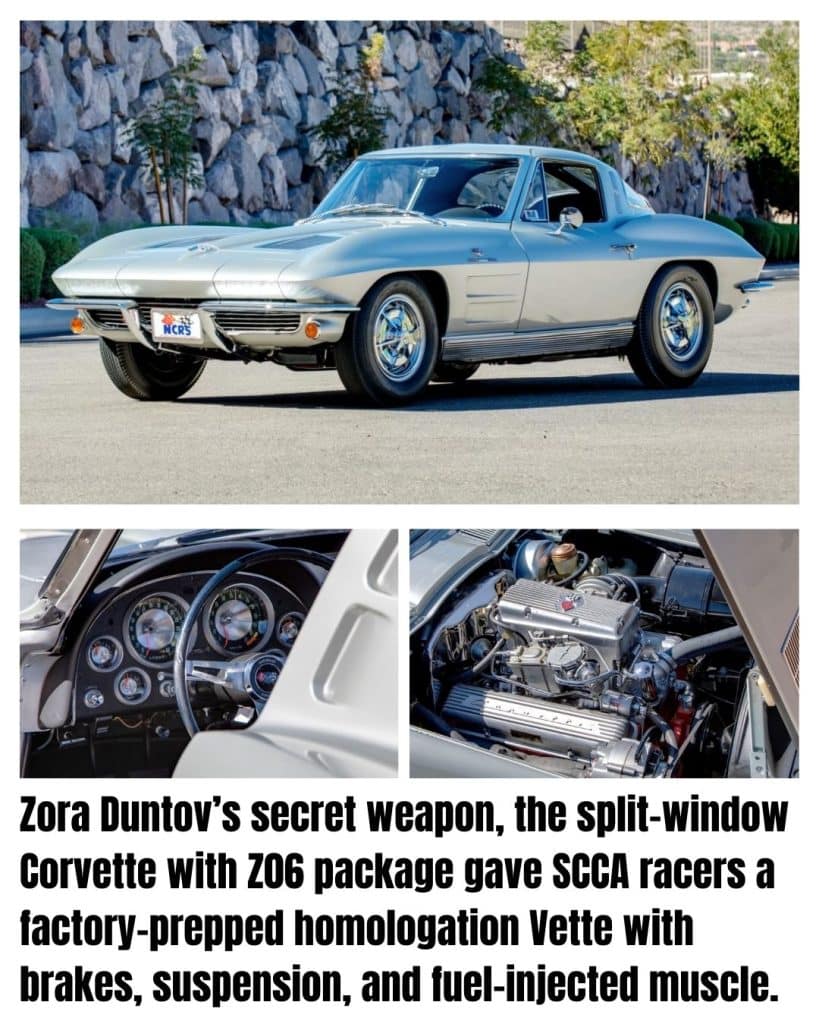
The split-window Corvette Sting Ray is legendary, but the Z06 package made it a homologation special.
Designed for SCCA racing, the Z06 included a 327 fuel-injected engine, big brakes, and heavy-duty suspension.
Only 199 were made, making it extremely rare. Zora Arkus-Duntov pushed the option through to give racers a factory-prepped Vette.
While most Corvette buyers never knew the Z06 existed, those who did got a car built specifically to qualify Chevy for road racing glory.
23. Dodge Charger 500 (1969)
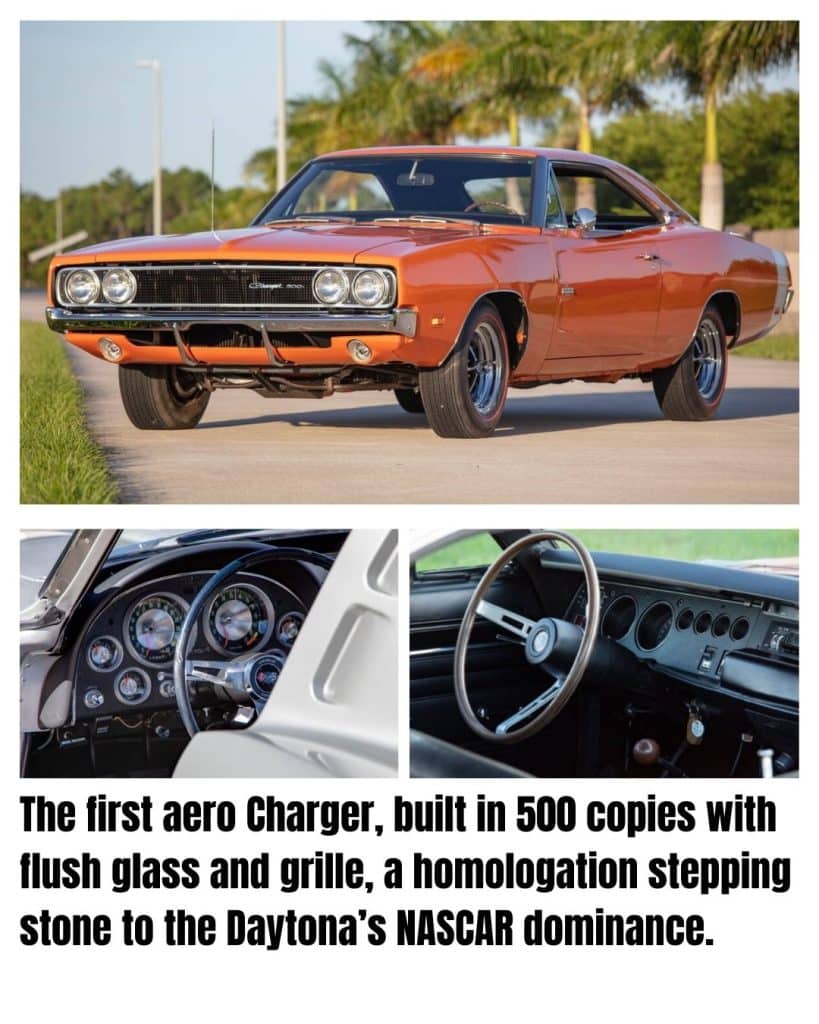
Before the Daytona, Dodge tried the Charger 500 as a NASCAR homologation car. It had a flush-mounted grille and rear window to improve aerodynamics.
About 500 were built to satisfy NASCAR rules, but they weren’t slippery enough to dominate the superspeedways.
Still, the Charger 500 represents the first shot Dodge fired in the aero wars — a street car built solely because the rulebook required it.
Without it, the legendary Daytona and Superbird may never have existed.
24. Pontiac Firebird Trans Am (1969)
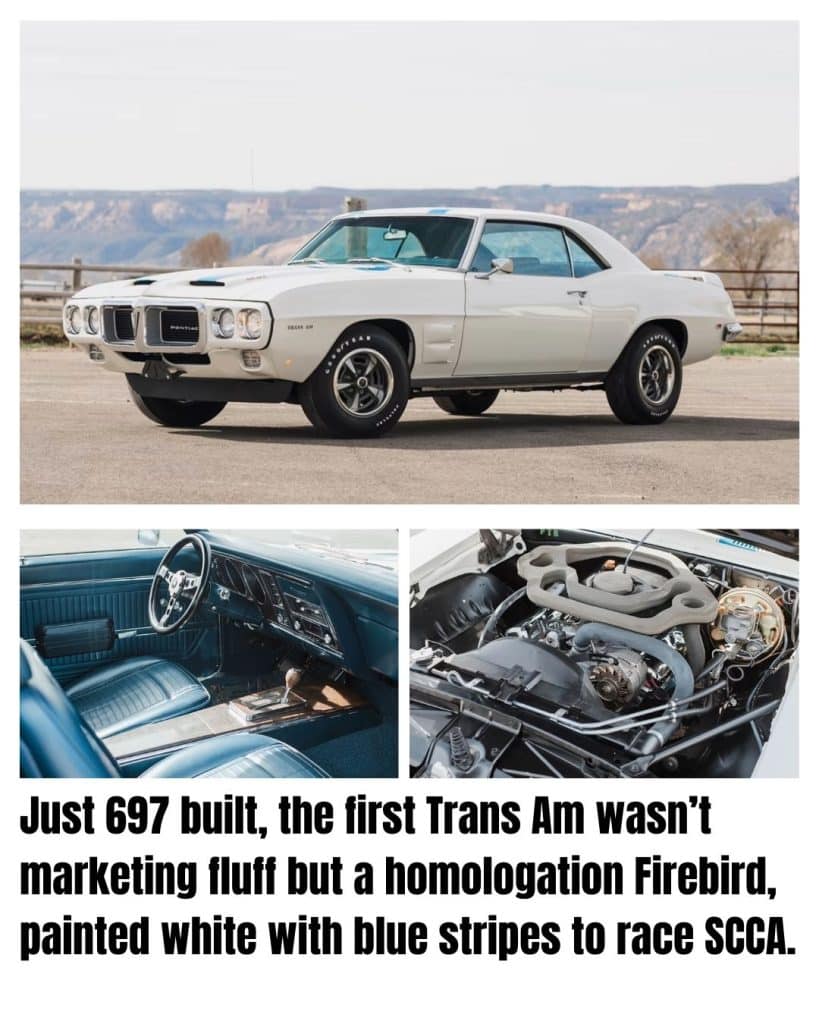
Pontiac created the Trans Am not as a marketing gimmick, but as a homologation model for SCCA Trans Am racing.
With just 697 built in 1969, all painted white with blue stripes, it was rare from day one. Under the hood, it carried Pontiac’s potent Ram Air engines, making it track-ready right off the lot.
The Trans Am became a long-running brand, but the ’69 originals were pure homologation cars, a race series gave them their name.
25. Oldsmobile 442 W-30 (1970)

Oldsmobile’s W-30 package was more than just performance bragging rights. It was a homologation effort to qualify their 442 for stock and drag racing classes.
Featuring a 455 with a hot cam, forced-air induction, and lightweight components, the W-30 was designed to run hard right out of the showroom.
Though Oldsmobile had a reputation for comfort, the W-30 was proof they could build a true race-bred muscle car. Racers got what they needed, and buyers got a street-legal weapon.
Thanks for Reading!
Looking back, it’s hard not to smile at how far automakers were willing to go just to get on the track.
Whether it was a fiberglass hood, a giant wing, or an untamed big block, homologation gave us some of the wildest street cars ever offered.
They were loud, fast, and often impractical — but that’s exactly what made them unforgettable.
